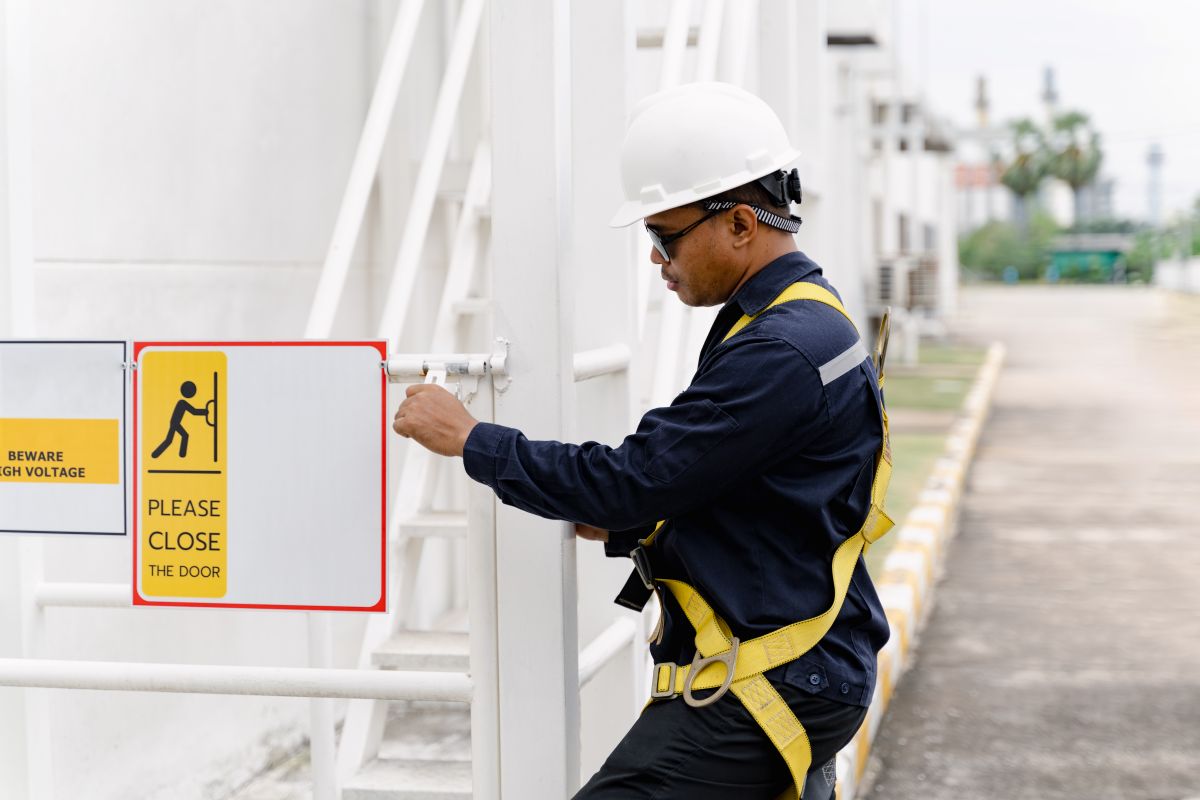
Health and Safety Video From Early Communication to Tomorrow’s Innovations
Across factories, construction sites, hospitals, and office floors, safety messages have long been a visible part of the working environment. From bold posters bearing slogans to carefully printed manuals, organisations have always sought ways to communicate essential safety protocols. Yet, the methods used to deliver these messages have shifted dramatically, shaped by changes in workforce dynamics, learning psychology, technology, and compliance requirements. What was once a static message on a wall is now an immersive, role-specific experience. Health and safety video has emerged not just as a preferred medium but as the natural continuation of decades of communication development. Understanding how these formats evolved, and what that evolution tells us about the future, is not only relevant but necessary for those responsible for keeping workplaces safe, compliant, and informed. Let’s explore how safety communication travelled from print to interactivity, and what the next decade is expected to look like.
Early Foundations: Pre-1950s – Oral Instruction and Proto-Signage
Long before training sessions and health and safety video became the norm, safety instruction was shared verbally. Knowledge passed from experienced workers to newcomers formed the basis of operational safety. This mentor-based communication was practical but lacked consistency, particularly in larger industrial operations.
As workplaces grew more complex during the Industrial Revolution, the first visual warning systems emerged. Basic signage, often hand-painted, warned of moving machinery, fire risks, or hazardous materials. While far from standardised, these signs introduced the concept of visual safety cues. They marked the beginning of recognising that clear communication could prevent accidents, a principle that would carry through every future format.
1950s–1970s: The Rise of Posters, Slogans, and Standardisation
With industrialisation booming worldwide, the mid-20th century saw a surge in safety awareness campaigns. Governments and regulatory bodies introduced standardised safety signage. In the UK, the Royal Society for the Prevention of Accidents (RoSPA) began producing public safety posters. Similar efforts took place in Australia, Germany, the United States, and other industrialised nations. Colour-coded warnings, symbol-based signage, and short slogans such as “Safety First” became widespread.
These posters were designed to be instantly recognisable and universally understood, especially important in multilingual workplaces. They served a vital purpose in communicating static, high-priority messages quickly. Their introduction also reflected a growing belief that visual communication could influence behaviour, a concept that would find new depth in the age of video.
1980s–1990s: Manuals, VHS, and Training Days
The next significant shift came with the introduction of printed manuals and static video training. Many organisations implemented formal safety induction programmes, relying on thick binders of safety policies, standard operating procedures, and incident logs. VHS tapes began to supplement or replace live demonstrations, especially in sectors like manufacturing, aviation, and logistics.
These early health and safety video formats were often generic and linear, designed for playback in training rooms with minimal interaction. However, they allowed for consistent messaging and offered a level of realism that posters and manuals could not achieve. While limited by production and distribution constraints, these videos signalled a move toward immersive learning environments.
At the same time, legislation in many countries began requiring proof of compliance training. Video became not just a communication tool but part of a legal and operational framework for accountability.
2000s–2010s: The Digital Turn and the Birth of Interactive Training
The rise of digital infrastructure and internet accessibility in the early 2000s triggered a transformation in workplace learning. Organisations began moving training online, creating eLearning modules with quizzes, progress tracking, and compliance certification. Content became modular, structured, and increasingly sophisticated in terms of design and functionality.
Health and safety video content also evolved. No longer confined to tapes or DVDs, it could now be embedded in digital courses, segmented for different roles, and deployed across multiple locations instantly. Animated sequences and voiceovers replaced static slideshows, and safety scenarios could be recreated virtually rather than staged in live demonstrations.
These changes responded to the growing need for efficiency, localisation, and measurable outcomes. Importantly, they laid the groundwork for the next leap: real-time adaptability, interactivity, and personalisation.
2010s–Present: The Maturity of Interactive Video and Microlearning
As video technology improved and became more accessible, health and safety communication entered a new phase defined by interactivity and relevance. Scenario-based video allowed learners to make choices and see consequences. Short-form modules delivered information in digestible segments. Mobile compatibility ensured accessibility, even in field-based industries.
Health and safety video is now widely used to deliver role-specific training, simulate real-life hazards, and support compliance in high-risk sectors such as energy, mining, and logistics. Whether through animation, live-action, or hybrid formats, video can now be multilingual, adaptive, and tracked for completion and comprehension.
What distinguishes this era is the understanding that safety learning must not only inform but engage. Passive viewing has given way to measurable interaction. The result is a more informed workforce, better preparedness, and reduced training overhead without compromising effectiveness.
The Next Chapter: What the Future Signals
As organisations seek smarter, more responsive safety systems, new technologies are reshaping how health messages are delivered. The future of health and safety video is not just about new formats but about deeper integration, intelligence, and personalisation.
AI-Generated Safety Content
Artificial intelligence is expected to play a role in producing role-specific videos tailored to individual users’ responsibilities, recent behaviour, or site-specific hazards. These dynamic modules could replace static libraries, ensuring content remains current and relevant.
Wearable-Triggered Microlearning
Smart helmets, vests, and ID tags are beginning to include sensors capable of recognising environmental risks. These may soon trigger short video instructions or warnings when thresholds are crossed, offering learning in the moment of need.
Immersive Training through VR and Mixed Reality
Virtual reality safety drills, 360-degree hazard walkthroughs, and augmented overlays are being explored to simulate complex scenarios. These allow for repeatable practice in risk-free environments, especially useful for high-stakes industries.
Behaviour-Based Analytics and Adaptive Learning
Future systems may track learner behaviour and adjust content accordingly. If a viewer struggles with a topic or repeatedly fails a quiz, future videos may adapt to offer additional context, repetition, or alternative formats.
Real-Time Content Updates Based on Regulation
Compliance demands are changing frequently across industries. Video platforms integrated with regulatory databases could ensure content is updated immediately following policy changes, reducing risk and administrative effort.
What Historical Progress Reveals About Future Strategy
Understanding the evolution of safety communication is more than an academic exercise. Each stage, from oral tradition to AI-driven video, responded to a real-world need: clarity, consistency, engagement, efficiency. Recognising those drivers helps inform how communication can continue to improve.
The development of health and safety video reflects a shift in how organisations view employee education: no longer as a one-time task, but as a continuous, adaptive process. The future belongs to those who build on past insights to create systems that are not only informative but flexible, responsive, and human-centred.
A Medium Built on Momentum
The journey from hand-painted signs to AI-enhanced, wearable-activated video learning is a remarkable one, shaped by the realities of work, the evolution of technology, and the consistent need for safety in every environment. Health and safety video today stands as a culmination of everything that came before it: the immediacy of posters, the structure of manuals, the realism of VHS, and the adaptability of eLearning. As communication becomes more personalised, contextual, and intelligent, video is poised not only to continue but to evolve in ways still emerging. For organisations committed to fostering safer workplaces, understanding this evolution is more than useful, it is foundational to deciding what comes next.
If your health and safety communication strategy is due for a refresh, video offers a way forward that builds on proven methods. Reach out to Sound Idea Digital to learn how health and safety video can integrate with your existing approach and set new standards.
We are a full-service Web Development and Content Production Agency in Gauteng specialising in Video Production, Animation, eLearning Content Development, Learning Management Systems, and Content Production.
Contact us for a quote. | enquiries@soundidea.co.za | https://www.soundideavideoproduction.co.za| +27 82 491 5824 |
Extending the Conversation
To gain a broader understanding of how to maximise the impact of health and safety videos, these articles cover key aspects such as detailed planning strategies, the role of clear demonstration in communicating procedures, and aligning content with the principles of the E‑E‑A‑T framework. Each offers practical insights that build on the themes discussed here and support a more effective video approach.
How to Plan an Effective Health and Safety Video
Demonstrating Procedures with Health and Safety Videos
Health and Safety Video Content Through the E‑E‑A‑T Framework

